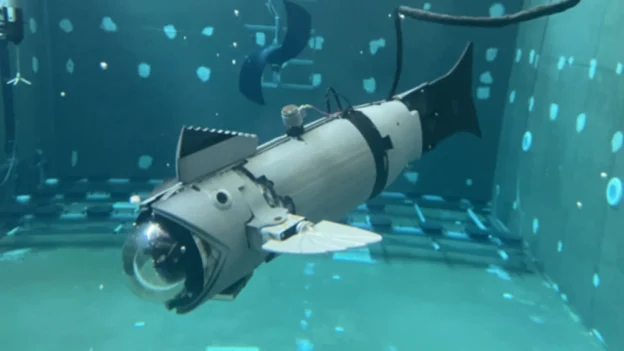This week, the Center for Research in Robotics and Underwater Technologies(CIRTESU) of the Universitat Jaume I conducted tests in PortCastelló with the robot fish that has just received national recognition for the best work in marine automation during the congress of the Spanish Committee of Automation held in Cartagena, Colombia.
The automation of the robot fish
This underwater robotic system integrates biomimetic fins, umbilical communication and an auxiliary sonar. In addition, its most outstanding capability is the ability to deploy and retrieve sensors in the marine environment, which makes it a key tool for the inspection and maintenance of aquaculture facilities. Among its functions is a visual inspection module designed to check fish farm nets from the inside, with the aim of improving safety and animal welfare.
According to researcher Raúl Marín, CIRTESU’s strategy consists of validating each advance first in controlled environments and then in real scenarios such as the Port of Castelló. There, Port Authority personnel collaborate continuously in the tests, which are repeated every two months. For Rubén Ibáñez, president of the entity, this work strengthens the position of the port as an innovation pole oriented to safer and more sustainable infrastructures.
This project is part of Andrea Pino Jarque’s doctoral thesis and is directed by researchers María Rosario Vidal and Raúl Marín, with the coordination of Professor Pedro J. Sanz. Young graduates in robotic intelligence have also participated, such as Max Puig Sariñena, who developed underwater communication experiments under the supervision of Professor Juan Echagüe.
The robot fish symbolizes a technological breakthrough in marine automation, while projecting the potential of university research applied to the productive sector. CIRTESU has indicated that the next stage will include systems capable of repairing nets, which opens new possibilities for the future of sustainable aquaculture.
Source and photo: UJI


